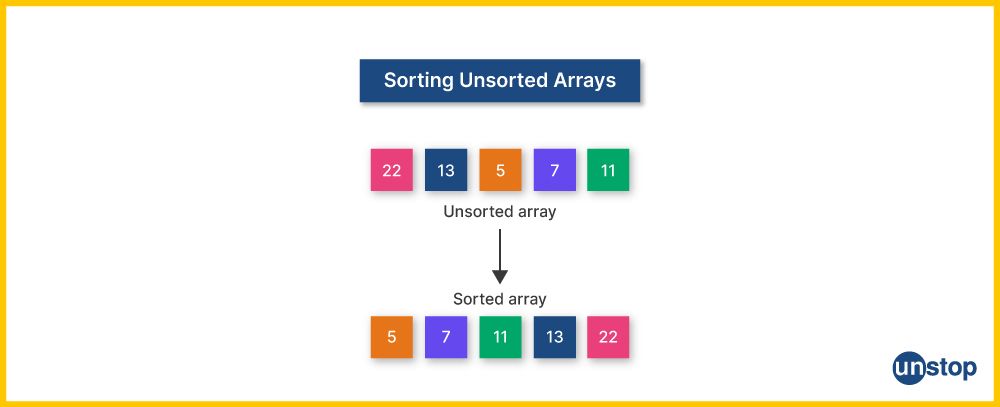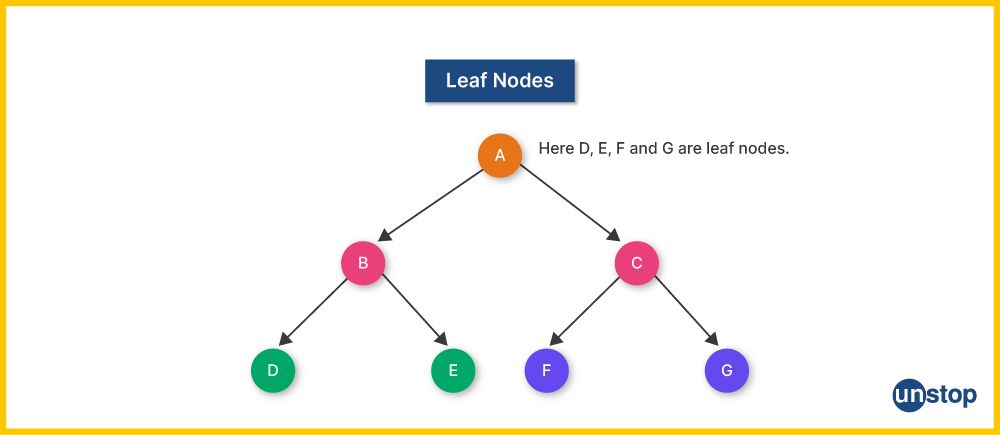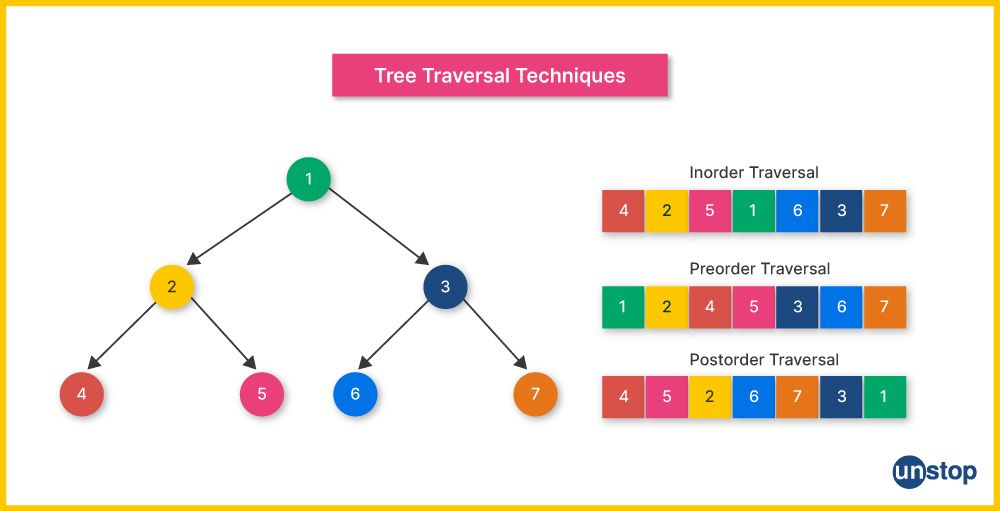- TCS Technical Interview Questions & Answers
- TCS Managerial Interview Questions & Answers
- TCS HR Interview Questions & Answers
- Overview of Cognizant Recruitment Process
- Cognizant Interview Questions: Technical
- Cognizant Interview Questions: HR Round
- Overview of Wipro Technologies Recruitment Rounds
- Wipro Interview Questions
- Technical Round
- HR Round
- Online Assessment Sample Questions
- Frequently Asked Questions
- Overview of Google Recruitment Process
- Google Interview Questions: Technical
- Google Interview Questions: HR round
- Interview Preparation Tips
- About Google
- Deloitte Technical Interview Questions
- Deloitte HR Interview Questions
- Deloitte Recruitment Process
- Technical Interview Questions and Answers
- Level 1 difficulty
- Level 2 difficulty
- Level 3 difficulty
- Behavioral Questions
- Eligibility Criteria for Mindtree Recruitment
- Mindtree Recruitment Process: Rounds Overview
- Skills required to crack Mindtree interview rounds
- Mindtree Recruitment Rounds: Sample Questions
- About Mindtree
- Preparing for Microsoft interview questions
- Microsoft technical interview questions
- Microsoft behavioural interview questions
- Aptitude Interview Questions
- Technical Interview Questions
- Easy
- Intermediate
- Hard
- HR Interview Questions
- Eligibility criteria
- Recruitment rounds & assessments
- Tech Mahindra interview questions - Technical round
- Tech Mahindra interview questions - HR round
- Hiring process at Mphasis
- Mphasis technical interview questions
- Mphasis HR interview questions
- About Mphasis
- Technical interview questions
- HR interview questions
- Recruitment process
- About Virtusa
- Goldman Sachs Interview Process
- Technical Questions for Goldman Sachs Interview
- Sample HR Question for Goldman Sachs Interview
- About Goldman Sachs
- Nagarro Recruitment Process
- Nagarro HR Interview Questions
- Nagarro Aptitude Test Questions
- Nagarro Technical Test Questions
- About Nagarro
- PwC Recruitment Process
- PwC Technical Interview Questions: Freshers and Experienced
- PwC Interview Questions for HR Rounds
- PwC Interview Preparation
- Frequently Asked Questions
- EY Technical Interview Questions (2023)
- EY Interview Questions for HR Round
- About EY
- Morgan Stanley Recruitment Process
- HR Questions for Morgan Stanley Interview
- HR Questions for Morgan Stanley Interview
- About Morgan Stanley
- Recruitment Process at Flipkart
- Technical Flipkart Interview Questions
- Code-Based Flipkart Interview Questions
- Sample Flipkart Interview Questions- HR Round
- Conclusion
- FAQs
- Recruitment Process at Paytm
- Technical Interview Questions for Paytm Interview
- HR Sample Questions for Paytm Interview
- About Paytm
- Most Probable Accenture Interview Questions
- Accenture Technical Interview Questions
- Accenture HR Interview Questions
- Amazon Recruitment Process
- Amazon Interview Rounds
- Common Amazon Interview Questions
- Amazon Interview Questions: Behavioral-based Questions
- Amazon Interview Questions: Leadership Principles
- Company-specific Amazon Interview Questions
- 43 Top Technical/ Coding Amazon Interview Questions
- Juspay Recruitment: Stages and Timeline
- Juspay Interview Questions and Answers
- How to prepare for Juspay interview questions
- Prepare for the Juspay Interview: Stages and Timeline
- Frequently Asked Questions
- Adobe Interview Questions - Technical
- Adobe Interview Questions - HR
- Recruitment Process at Adobe
- About Adobe
- Cisco technical interview questions
- Sample HR interview questions
- The recruitment process at Cisco
- About Cisco
- JP Morgan interview questions (Technical round)
- JP Morgan interview questions HR round)
- Recruitment process at JP Morgan
- About JP Morgan
- Wipro Elite NTH: Selection Process
- Wipro Elite NTH Technical Interview Questions
- Wipro Elite NTH Interview Round- HR Questions
- BYJU's BDA Interview Questions
- BYJU's SDE Interview Questions
- BYJU's HR Round Interview Questions
- A Quick Overview of the KPMG Recruitment Process
- Technical Questions for KPMG Interview
- HR Questions for KPMG Interview
- About KPMG
- DXC Technology Interview Process
- DCX Technical Interview Questions
- Sample HR Questions for DXC Technology
- About DXC Technology
- Recruitment Process at PayPal
- Technical Questions for PayPal Interview
- HR Sample Questions for PayPal Interview
- About PayPal
- Capgemini Recruitment Rounds
- Capgemini Interview Questions: Technical round
- Capgemini Interview Questions: HR round
- Preparation tips
- FAQs
- Technical interview questions for Siemens
- Sample HR questions for Siemens
- The recruitment process at Siemens
- About Siemens
- HCL Technical Interview Questions
- HR Interview Questions
- HCL Technologies Recruitment Process
- List of EPAM Interview Questions for Technical Interviews
- About EPAM
- Atlassian Interview Process
- Top Skills for Different Roles at Atlassian
- Atlassian Interview Questions: Technical Knowledge
- Atlassian Interview Questions: Behavioral Skills
- Atlassian Interview Questions: Tips for Effective Preparation
- Walmart Recruitment Process
- Walmart Interview Questions and Sample Answers (HR Round)
- Walmart Interview Questions and Sample Answers (Technical Round)
- Tips for Interviewing at Walmart and Interview Preparation Tips
- Frequently Asked Questions
- Uber Interview Questions For Engineering Profiles: Coding
- Technical Uber Interview Questions: Theoretical
- Uber Interview Question: HR Round
- Uber Recruitment Procedure
- About Uber Technologies Ltd.
- Intel Technical Interview Questions
- Computer Architecture Intel Interview Questions
- Intel DFT Interview Questions
- Intel Interview Questions for Verification Engineer Role
- Recruitment Process Overview
- Important Accenture HR Interview Questions
- Points to remember
- What is Selenium?
- What are the components of the Selenium suite?
- Why is it important to use Selenium?
- What's the major difference between Selenium 3.0 & Selenium 2.0?
- What is Automation testing and what are its benefits?
- What are the benefits of Selenium as an Automation Tool?
- What are the drawbacks to using Selenium for testing?
- Why should Selenium not be used as a web application or system testing tool?
- Is it possible to use selenium to launch web browsers?
- What does Selenese mean?
- What does it mean to be a locator?
- Identify the main difference between "assert", and "verify" commands within Selenium
- What does an exception test in Selenium mean?
- What does XPath mean in Selenium? Describe XPath Absolute & XPath Relation
- What is the difference in Xpath between "//"? and "/"?
- What is the difference between "type" and the "typeAndWait" commands within Selenium?
- Distinguish between findElement() & findElements() in context of Selenium
- How long will Selenium wait before a website is loaded fully?
- What is the difference between the driver.close() and driver.quit() commands in Selenium?
- Describe the different navigation commands that Selenium supports
- What is Selenium's approach to the same-origin policy?
- Explain the difference between findElement() in Selenium and findElements()
- Explain the pause function in SeleniumIDE
- Explain the differences between different frameworks and how they are connected to Selenium's Robot Framework
- What are your thoughts on the Page Object Model within the context of Selenium
- What are your thoughts on Jenkins?
- What are the parameters that selenium commands come with a minimum?
- How can you tell the differences in the Absolute pathway as well as Relative Path?
- What's the distinction in Assert or Verify declarations within Selenium?
- What are the points of verification that are in Selenium?
- Define Implicit wait, Explicit wait, and Fluent
- Can Selenium manage windows-based pop-ups?
- What's the definition of an Object Repository?
- What is the main difference between obtainwindowhandle() as well as the getwindowhandles ()?
- What are the various types of Annotations that are used in Selenium?
- What is the main difference in the setsSpeed() or sleep() methods?
- What is the way to retrieve the alert message?
- How do you determine the exact location of an element on the web?
- Why do we use Selenium RC?
- What are the benefits or advantages of Selenium RC?
- Do you have a list of the technical limitations when making use of Selenium RC? Selenium RC?
- What's the reason to utilize the TestNG together with Selenium?
- What Language do you prefer to use to build test case sets in Selenium?
- What are Start and Breakpoints?
- What is the purpose of this capability relevant in relation to Selenium?
- When do you use AutoIT?
- Do you have a reason why you require Session management in Selenium?
- Are you able to automatize CAPTCHA?
- How can we launch various browsers on Selenium?
- Why should you select Selenium rather than QTP (Quick Test Professional)?
- Airbus Interview Questions and Answers: HR/ Behavioral
- Industry/ Company-Specific Airbus Interview Questions
- Airbus Interview Questions and Answers: Aptitude
- Airbus Software Engineer Interview Questions and Answers: Technical
- Importance of Spring Framework
- Spring Interview Questions (Basic)
- Advanced Spring Interview Questions
- C++ Interview Questions and Answers: The Basics
- C++ Interview Questions: Intermediate
- C++ Interview Questions And Answers With Code Examples
- C++ Interview Questions and Answers: Advanced
- Test Your Skills: Quiz Time
- MBA Interview Questions: B.Com Economics
- B.Com Marketing
- B.Com Finance
- B.Com Accounting and Finance
- Business Studies
- Chartered Accountant
- Q1. Please tell us something about yourself/ Introduce yourself to us.
- Q2. Describe yourself in one word.
- Q3. Tell us about your strengths and weaknesses.
- Q4. Why did you apply for this job/ What attracted you to this role?
- Q5. What are your hobbies?
- Q6. Where do you see yourself in five years OR What are your long-term goals?
- Q7. Why do you want to work with this company?
- Q8. Tell us what you know about our organization
- Q9. Do you have any idea about our biggest competitors?
- Q10. What motivates you to do a good job?
- Q11. What is an ideal job for you?
- Q12. What is the difference between a group and a team?
- Q13. Are you a team player/ Do you like to work in teams?
- Q14. Are you good at handling pressure/ deadlines?
- Q15. When can you start?
- Q16. How flexible are you regarding overtime?
- Q17. Are you willing to relocate for work?
- Q18. Why do you think you are the right candidate for this job?
- Q19. How can you be an asset to the organization?
- Q20. What is your salary expectation?
- Q21. How long do you plan to remain with this company?
- Q22. What is your objective in life?
- Q23. Would you like to pursue your Master's degree anytime soon?
- Q24. How have you planned to achieve your career goal?
- Q25. Can you tell us about your biggest achievement in life?
- Q26. What was the most challenging decision you ever made?
- Q27. What kind of work environment do you prefer to work in?
- Q28. What is the difference between a smart worker and a hard worker?
- Q29. What will you do if you don't get hired?
- Q30. Tell us three things that are most important for you in a job.
- Q31. Who is your role model and what have you learned from him/her?
- Q32. In case of a disagreement, how do you handle the situation?
- Q33. What is the difference between confidence and overconfidence?
- Q34. If you have more than enough money in hand right now, would you still want to work?
- Q35. Do you have any questions for us?
- Interview Tips for Freshers
- Tell me about yourself
- What are your greatest strengths?
- What are your greatest weaknesses?
- Tell me about something you did that you now feel a little ashamed of
- Why are you leaving (or did you leave) this position??
- 15+ resources for preparing most-asked interview questions
- CoCubes Interview Process Overview
- Common CoCubes Interview Questions
- Key Areas to Focus on for CoCubes Interview Preparation
- Conclusion
- Frequently Asked Questions (FAQs)
- Data Analyst Interview Questions With Answers
- About Data Analyst
Atlassian Interview Questions For Technical & HR Rounds (Sample Answers Included)

Atlassian is a renowned software company, known for its collaboration tools and project management software. Founded in 2002 in Sydney, Australia, Atlassian has grown to become a global leader in the industry, with offices and customers around the world.
Jira, their flagship product, is a powerful project management tool that helps teams plan, track, and release their work. Atlassian also offers a suite of other tools and products that complement their main offerings, like Trello, a visual collaboration tool, Bitbucket, a Git repository management solution, and Opsgenie, an incident management platform.
What a treat!
— Atlassian (@Atlassian) October 30, 2023
You asked, and we listened🌛
Work whenever and wherever best suits you (and your eyeballs!) with Dark Mode options for @Jira, @Trello, and @Confluence. pic.twitter.com/ilR83UDFqV
One of the key aspects of Atlassian's culture is its emphasis on teamwork and collaboration. The company believes in the power of collaboration to drive innovation and productivity, and this is reflected in its products as well. If you’re preparing for a role with the company, then it is essential to familiarize yourself with commonly asked Atlassian interview questions.
Atlassian Interview Process
The interview process at Atlassian is a multi-stage journey that allows candidates to showcase their skills and abilities. It typically consists of several rounds, each designed to assess different aspects of a candidate's qualifications.
Here’s a snapshot of the Atlassian interview process for engineering roles:
| Stage | Purpose | Duration |
| Coding Interview 1 & 2 | Evaluate candidate’s coding skills, code quality, and conceptual thinking | 60 minutes each |
| System Design Interview | Candidates need to demonstrate technical depth, breadth, and proficiency by designing a solution to an established problem | 60 minutes |
| Management Interview | Scenario-based questions to evaluate how candidates approach various aspects of their role in a team environment | 60 minutes |
| Values Interview | Behavioral interview questions to assess if candidates’ thought processes and actions align with Atlassian’s core values | 45 minutes |

Top Skills for Different Roles at Atlassian
Group Product Manager
Experience and Skills: Atlassian values candidates who have demonstrated their ability to successfully manage products throughout their lifecycle. Desirable skills include:
Soft Skills:
-
Strategizing and market research
-
Collaboration and leadership skills
Technical Skills:
-
Expertise in Agile methodologies
-
Familiarity with project management tools, especially Atlassian products like Jira or Trello
-
Knowledge of software development processes
Software Developer
Experience and Skills: As a software developer, you will encounter various challenges that require innovative solutions. Desirable skills include:
Soft Skills:
-
Problem-solving abilities
-
Critical thinking
-
Teamwork and communication abilities
-
Adaptability (especially to new technologies or changing project requirements)
Technical Skills:
-
Coding Proficiency: Familiarity with programming languages commonly used at Atlassian, such as Java, Python, or JavaScript, is preferred.
-
Knowledge of tools and frameworks used by Atlassian, like Jira as well as popular frameworks like React or Angular
As per Atlassian, they are not just looking for technical competencies, but also critical skills and relevant experience.
“Instead of evaluating candidates based on their proficiency in a specific language, we’re looking for people with broad distributed engineering skills and experience with various languages. And we’ve designed our interview process accordingly: It’s an assessment framework based not on languages, but on qualifications such as problem-solving ability and learning agility. Because of this, we’re able to see a candidate’s depth and breadth. We’d like to see not only how you code, but how you think.”
Atlassian Interview Questions: Technical Knowledge
The key engineering roles at Atlassian are:
-
Frontend
-
Backend
-
Fullstack
-
SRE (Site reliability engineering)
Depending on the role you’re applying for, the questions may vary in complexity and specificity. However, here are some common Atlassian technical interview questions that you may when applying for engineering roles:
1. Describe the steps you would take to build a medium-sized web application from scratch.
Building a medium-sized web application from scratch typically involves several key steps:
-
Define the project’s objectives, features and the targeted audience. Create a detailed project plan. Prepare wireframe mockups and design a UI. Determine the specific technology stack, architecture, and data model.
-
Make sure your writing is following best practices. Separate the application into separate modules or components and make it incremental. Design the database infrastructure with an eye on data security and extensibility.
-
Conduct integration acceptance testing to confirm that the application functions accordingly. Constantly optimize code and database queries as assets for higher performance.
-
Check the application's security by implementing security measures, like authentication, authorization, and data encryption, to ensure the application is safe and user data is protected.
-
Install the production version of the application into the servers, as well as build and introduce continuous deployment and continuous integration (CD/CI) pipelines. Ensure that the application works well, has no defects, and is frequently upgraded in line with new needs.
2. How would you optimize the performance of an app that has a large tree structure?
To optimize an application with a large tree structure, you can consider the following techniques:
-
Efficient data structures such as balanced trees (AVL or Red-Black trees) are used for storing and traversing the tree structure. Pagination and lazy loading should be applied to get and show tree nodes in batches instead of downloading the whole tree simultaneously.
-
Store portions of the tree that are often referenced on a computer to decrease the number of queries to improve throughput. Ensure that the database tables for storing tree nodes are properly indexed to increase the speed of retrievals.
-
Create efficient database queries, including methods like recurrent common table expressions for hierarchical information.
-
Shift intensive tree-related operations to background jobs or tasks to avoid blocking the principal application line. Perform upfront optimizations such as rendering or virtualization and display only those items that are visible on screen.
3. Can you explain how you would design and code a feature that allows users to collaborate on documents online?
To implement online document collaboration, you can use the following steps:
-
Real-Time Collaboration: Users should be able to see changes other people make in real-time through technologies such as WebSockets and server-sent events.
-
Conflict Resolution: Put together a conflict resolution method and simultaneously deal with various modifications done by several editors.
-
Version Control: There should be a document revision history whereby individuals can trace changes, revert to previous versions, and add comments.
-
Access Control: Add access control, such as defining who can view, edit, or comment on this document. Enforce permissions by using authentication and authorization mechanisms.
-
Collaborative Editing UI: Design an intuitive and concurrent editing environment featuring cursor position indicators for other users’ inputs, highlighting changes, and chatting.
-
Persistence: Ensure durability of document data by storing it in a database for consistency.
4. Take any example in ticket closing and explain how will you do hypothesis testing.
Hypothesis testing involves the following steps:
Formulate Hypotheses:
-
Null Hypothesis (H0): Average ticket closure time post new processes indicates no significant difference.
-
Alternative Hypothesis (H1): The mean ticket closure in the pre-process was significantly higher than in the post-process.
Data Collection: Measure ticket closing periods before and after implementing the changes.
Choose Significance Level: Choose an alpha value (e.g., α = 0.05) and state of statistical significance.
Conduct Statistical Test: Compare the mean ticket closing time using a paired-sample or a simple t-test depending on the number of samples and the data distribution.
Compute the Test Statistic: Calculate the test statistic (e.g., t-test) using the population parameter estimates obtained from the sample.
Calculate P-value: The p-value is determined by how likely it is to observe such results if the null hypothesis is true. Such a test statistic is called the likelihood ratio.
Decide: Compare the p-value with the predefined level of significance. Reject the null hypothesis if its p-value is less than the alpha value. Therefore, the null hypothesis should not be discarded when p>α.
Draw a Conclusion: Ascertain if the time for closing tickets has changed due to the process change using that test's findings.
Report Results: Describe the statistical analysis results and highlight the drawbacks of a process modification to reduce the time for tickets' closure to relevant parties.
5. List the difference between Git and Mercurial.
Here are the key differences between Git and Mercurial
-
Distributed vs. Centralized: Git is a distributed version control system; in this form, each developer has a comprehensive copy with history. On the other hand, Mercurial can be used as a centralized or distributed version control software.
-
Performance: People typically think that Git tends to be fast, particularly regarding big repositories.
-
Branching Models: Lightweight branches are found in a more flexible branch model of Git than others. Mercurial uses named branches.
-
Commands and Terminology: Although they employ identical commands, there are certain vocabularies as well as styles of working that distinguish Git from Mercurial.
-
Toolset Integration: While Mercurial offers an integrated toolset, Git relies on other tools such as GitHub and GitLab.
6. How do you resolve merge conflicts?
Here's how you can resolve merge conflicts:
-
Manual Resolution: Review conflicted files in your code editor, locate conflicted sections that are highlighted by git/mercurial, and make manual editing on the conflict to solve it.
-
Use of Mergetools: Set up a Mergetool that will provide you with a visual method of resolving your conflicts. Some tools, such as KDiff3 or P4Merge, can help visualize and resolve any conflicts.
-
Accept Changes: Merging can be canceled with git merge – abort or hg merge – abort for a choice of taking changes from another branch than a given branch.
-
Committing Changes: Then resolve the conflict and commit with ‘git commit’ or ‘hg commit.’
7. How do you start services in Linux and Windows?
Linux
-
You can use the command “systemctl” to start a service. For example: `sudo systemctl start serviceName.`
-
You may opt for service-specific commands, including service serviceName start.
Windows
-
Here, use services.msc GUI for initiation of a service. Click on the start to search for the service required.
-
Alternatively, type net start serviceName on your command prompt or PowerShell.
8. What are the differences between Process and Thread?
Definition: Thread is the smallest execution element inside the process, which runs as a standalone program executing by itself in separate memory space.
| Criteria | Process | Thread |
| Resource Allocation | Memory is distinct for processes | Memory is shared |
| Communication | IPC is necessary for communication between processes | Threads share variables and thus do not require additional communication channels. |
| Overheads | It is more expensive to make a new process than a new thread. | Less expensive than creating a new process. |
| Parallelism | Multi-core systems offer parallelism, which allows processes to run in parallel and hence better parallelism. | A single core can be only accessed by one thread at once. |
9. What do you mean by virtual memory? How does the virtual memory map to physical memory?
An operating system feature called virtual memory involves using software and hardware to transfer data between hard disk storage and RAM to enable a computer with insufficient amounts of RAM to function adequately with some memory issues.
Mapping to Physical Memory
Virtual memory comprises several pages mapped into real memory locations. The operating system of the memory management unit does it. For example, when there is a demand for a virtual address from a particular program, MMU translates the request into a corresponding physical address of real memory so that the program can work with that actual RAM.
10. How do processes communicate?
Processes primarily communicate with each other through shared memory and message-passing. Here are some other ways
-
Pipes: Channel of one-way communication between interrelated processes.
-
Message Queues: A message can be sent through a message queue among processes. It’s usually used for processes that are not directly related to each other.
-
Sockets: Sockets enable communication between processes running on different machines via networks.
-
Files: Shared files allow processes to “talk” with each other, known as read/write communication between processes.
-
Signals: Signals can be sent by processes to inform another process about an event or to perform a certain action.
The communication mechanism to be used depends on the specific needs of the application.
11. What is a rate limiter?
A rate limiter is a way to limit operations carried out on a system for a short time when too much demand over the operations cannot be taken up for the system. For example, abuse mitigation via web API rate limiting i.e. thwarting brute force login attempts by allowing a limited number of tries per hour and rate control on outbound network traffic.
Rate limiters are used to prevent any form of mistreatment or bad acts. To ensure fair usage and avoid a situation whereby one user or system can dominate resources. It also helps guard against server overloads and ensures system stability.
12. Explain various techniques to sort an unsorted array efficiently.

Some of the techniques that can be used to sort an unsorted array are:
-
Quick Sort: Divide and conquer approach, separating the array into smaller subdivisions.
-
Merge Sort: Sort the array in half recursively and merge.
-
Heap Sort: Build a heap of maximum and minimum and continually extract the root element.
-
Bubble Sort: Reversely interchanges consecutive elements whenever they are in the reverse order.
-
Insertion Sort: Put the sorted array by insertion by picking off each element one after another from the unsorted section.
13. Given an array representing the heights of towers, write a function to find the index of the tower shorter than the current tower.
Algorithm
1. Initialize a stack and an array to hold the result indices.
2. Iterate through the tower heights.
3. Push the current index into the result array while the stack is not empty. The towers are shorter than the one indexed on the top of the stack.
4. Load the address of the first record currently stored for reference on top of the stack.
5. End returns the result array.
14. Discuss challenges and strategies when working with circular arrays in data structures.
Challenges
-
Identifying the beginning and ending positions within a circular array.
-
Efficiently iterating over elements.
-
Handling circular array rotations.
Strategies
-
Deal with index wrapping through modular arithmetic.
-
Keep track of the base position of the circular array.
-
For this purpose, consider using a circular queue or deque.
15. Explain how to identify and manipulate leaf nodes efficiently.

Identification of Leaf Nodes
-
The last nodes, or with no “child” nodes, are leaf nodes.
-
Cross the tree and look for a node with neither the left nor the right child.
Manipulation of Leaf Nodes
-
The parents need to be updated when we are inserting or deleting.
-
In addition, while removing a leaf node, update its parent’s pointer as null during deletion.
17. Write an algorithm to find the nearest tower for each tower in a given array of tower heights.
Algorithm
1. Begin with an empty stack and the answer indices array.
2. Iterate through the tower heights.
3. Push the current index in the result array while the stack is non-empty and the current tower is less than the tower at the index on top of the stack.
4. Place the present index on the stack.
5. Return the result at the end.
18. Given a collection of elements, devise an algorithm to process them efficiently.
Algorithm:
1. Determine Objective: Ensure you clearly define the purpose of processing.
2. Choose Data Structures: Choose appropriate data structures depending on the kinds of elements and what you would like to perform.
3. Optimal Algorithms: Efficiently use algorithms that execute necessary functions.
4. Parallel Processing: If possible, study some parallel processing techniques that would help increase the algorithm’s speed.
5. Optimize for Special Cases: Categorizing and optimizing typical and exceptional cases.
6. Complexity Analysis: Efficiency is ensured by analyzing the time and space complexities.
19. Explain the process of traversing a binary tree and the different types of tree traversal algorithms.
Binary Tree Traversal Process:
1. Start at the root.
2. Carry out the specified operation for every node.
3. Apply this process recursively onto the left and right subtrees.
There are three types of tree traversal algorithms:
In-Order Traversal (Left-Root-Right): Start at traverse left subtree, then visit a root to have traversing continued in the right subtree.
Pre-Order Traversal (Root-Left-Right): Go down, turn left, descend, move right.
Post-Order Traversal (Left-Right-Root): Visit the root, traverse the left subtree, and traverse the right subtree.

20. Describe operations to increment specific elements and their impact on the list.
To increment specific elements, follow these steps:
1. Loop across the list of integers.
2. Increasing particular aspects upon specified conditions or criteria should be identified
3. Increase the selected elements by a certain amount of number.
4. Make a copy of that and run through the list.
Impact on the List
-
Only those elements that satisfy certain conditions are altered.
-
The condition check and selection determine the overall time complexity to increase the relevant array elements.
21. Discuss the importance of coding prompts in software development and their role in enhancing problem-solving skills.
Coding prompts give an insight into how users should address real-world problem-solving situations. They mimic problems that arise in practical software engineering. Prompts also enable evaluators to establish if a candidate can practically use theories in problem-solving situations.
Coding prompts help enhance problem-solving skills by:
-
Encouraging systematic problem analysis.
-
Promoting efficient algorithm design.
-
Enhancing coding proficiency and style.
-
Stimulating creativity towards identifying optimum solutions.
-
Improving debugging and optimization skills.
22. Given a problem statement, explain how you would determine the appropriate size for an array in a software development project.
The steps to determine the appropriate size for an array in a software development project are:
1. Understand Requirements: Make sure you know what the particular software does, and why it does it.
2. Data Analysis: Determine the data type the array must handle regarding volume and type.
3. Consider Future Growth: Plan for a possible increase in data size to achieve scalability.
4. Memory Constraints: Ensure that you consider the limitation of the memory of the targeted platform.
5. Optimization vs. Space Trade-off: Strike a balance between space efficiency and the demands of the project.
6. Testing and Validation: Use sample data to test the array size, then verify performance.
23. Outline the key considerations in designing efficient issue-tracking software, emphasizing data structures and algorithms.
When designing efficient issue-tracking software, the key considerations for data structures are:
-
Store and retrieve issues using appropriate data structures like hash tables and balanced search trees.
-
Use priority queues in controlling issue priorities.
-
Use graphs to keep tabs on the interdependence of problems.
On the other hand, the key considerations for algorithms are:
-
Develop effective searching algorithms to retrieve targeted questions rapidly.
-
Sorting issues according to priority, create_date, etc.
-
Utilize graph algorithms for identifying interdependencies and resolving problems between issues.
-
Algorithms that reduce issue resolutions in optimizing workflows.
24. Describe an algorithm to transform a list of integers based on specified rules and constraints.
Algorithm
1. Go through that integer’s list again.
2. Transform each integer following the particular rules and restrictions.
3. Add transformed values to a list.
Example Rules
-
Double it if it’s an even number.
-
Take a square of the value if it is prime.
-
Add a constant value to each element.
Impact
-
The algorithm changes the original list through predefined rules and limitations.
25. Given a large input array, discuss techniques to process it efficiently, considering both time and space complexity.
To efficiently process a large input array, we can consider the following time and space complexity techniques:
Time Complexity
1. Parallel Processing: Split the array into chunks, then process them in parallel.
2. Streaming Algorithms: Process sequentially the elements arrived at individually, thus avoiding having all the array items kept in the memory.
3. Batch Processing: Split your array for gradual processing of increments.
Space Complexity
1. In-Place Algorithms: Change the array elements without employing extra memory.
2. Sampling: Reduce memory usage by processing a subset of an array.
3. Streaming Processing: Store array elements one-by-one, minimizing the need for maintaining an array in memory.
Atlassian Interview Questions: Behavioral Skills
Here are some questions that you may encounter during the HR round i.e. the values interview:
1. How would you summarize your engineering journey?
My engineering journey has shaped me into a resilient and adaptable professional who is always eager to take on new challenges and contribute to meaningful projects. From my early days of studying engineering in college to my current role, I have always been passionate about solving complex problems and finding innovative solutions. Throughout my journey, I have worked on various projects that have allowed me to develop my technical skills and gain practical experience. One such project was designing and implementing a solar power system for a remote community. I worked with limited resources and logistical constraints, but it enhanced my technical skills and ability to collaborate effectively.
2. What is the biggest failure in your life? How did you overcome that?
One of the biggest failures in my life was when I failed to secure a job after graduating from college. It was a difficult time for me as I had put a lot of effort and hard work into my studies, and I had high expectations of finding a job right away. To overcome this, I broadened my job search, networked, and attended job fairs. I also took online courses and workshops to enhance my skills. Seeking guidance from career counselors and mentors, I improved my resume and interview skills. Eventually, my perseverance paid off, and I secured a job aligned with my interests and qualifications. This failure taught me the importance of adaptability and growth.
3. Do you think your values align with the Atlassian culture? How?
Yes, I believe my values align with the Atlassian culture. Atlassian is known for its emphasis on collaboration, transparency, and continuous learning, which are values that I deeply resonate with. Throughout my career, I have always prioritized open and honest communication, both within my teams and with stakeholders. I believe in fostering a culture of trust and collaboration where everyone's ideas are valued and respected. I also have a strong passion for continuous learning and personal growth, which aligns with Atlassian's focus on innovation and improvement.
4. Give an example of a time you dealt with conflict at work.
There was a time when there was a disagreement between two team members regarding the approach to a project - one preferred a traditional, structured approach while the other favored an agile, adaptable approach. I facilitated a meeting where both parties were able to express their concerns and perspectives. Through open communication and active listening, we were able to find a compromise and move forward with a solution that satisfied everyone involved.
5. Have you ever faced a situation where you thought you would miss a deadline? How did you deal with it?
Yes, I have faced a situation where I thought I would miss a deadline. It was during a particularly busy period when I had multiple projects to handle simultaneously. To manage the situation, I prioritized my tasks and created a detailed schedule to ensure I could allocate sufficient time to each project. I also communicated with my team and stakeholders to manage expectations and negotiate deadlines if necessary. By staying organized and focused, I was able to meet all the deadlines without compromising the quality of my work.
Atlassian Interview Questions: Tips for Effective Preparation
Here are some tips that can help you prepare for an interview at Atlassian:
-
Familiarize yourself with Atlassian products such as Jira, Confluence, Bitbucket, or Trello.
-
Practice answering behavioral-based interview questions that assess your problem-solving abilities.
-
Research the company culture at Atlassian to align your responses accordingly.
-
Familiarize yourself with the Agile methodology, as Atlassian heavily emphasizes this approach in their development process.
-
Prepare specific examples from your previous work experience that demonstrate your ability to work collaboratively in a team setting.
Array is a favourite topic of Atlassian interviewers. Find out the advantages and disadvantages of array in programming in this detailed guide!
Remember to showcase your technical expertise in troubleshooting while demonstrating strong interpersonal skills.
What do past candidates have to say?
Many candidates were impressed by the professionalism and expertise of the interviewers at Atlassian. They found that the hiring committee was genuinely interested in their experience, skills, and projects. The interviewers asked thought-provoking questions that allowed candidates to showcase their abilities.
However, some candidates also found certain aspects of the interview challenging. For example, they mentioned that technical questions required in-depth knowledge and problem-solving skills.
Engineers who interviewed at Atlassian also advised candidates to actively engage in discussions during coding sessions or design exercises. Sharing thoughts openly and seeking feedback throughout the session can demonstrate collaboration skills and a growth mindset.
If you are preparing for an interview with Atlassian, it is crucial to familiarize yourself with their interview process and understand the skills they value in each role. Remember to prepare detailed responses that highlight your experience, technical knowledge, problem-solving skills, and ability to work collaboratively.
You might also be interested in the following:
I’m a reader first and a writer second, constantly diving into the world of content. If I’m not writing or reading, I like watching movies and dreaming of a life by the beach.
Login to continue reading
And access exclusive content, personalized recommendations, and career-boosting opportunities.
Subscribe
to our newsletter
Blogs you need to hog!

How To Write Finance Cover Letter For Morgan Stanley (+Free Sample!)

55+ Data Structure Interview Questions For 2025 (Detailed Answers)

How To Negotiate Salary With HR: Tips And Insider Advice













Comments
Add comment